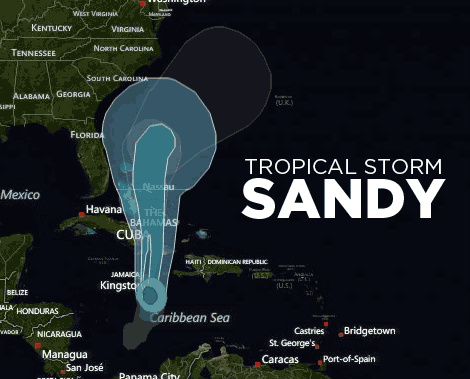Last month, shortly before Sandy ripped apart the shorelines of New Jersey and Long Island, we noted the possibly imminent budget-related retirement of government satellites that help forecasters refine weather data. As the article we cited then asked:
All this week, forecasters have been relying on … satellite observations for almost all of the data needed to narrow down what were at first widely divergent computer models of what Hurricane Sandy would do next: explode against the coast, or veer away into the open ocean?
Secure · Tax deductible · Takes 45 SecondsSecure · Tax deductible · Takes 45 Seconds
Now we know just how much reliance forecasters placed on satellites. Without them, predictions that Sandy would veer sharply to the west — the path that brought it to New York — would not have been made as early as they were.
From the Capital Weather Gang:
The European Centre for Medium-Range Forecasting (ECMWF), widely praised for the superior predictions of its model during superstorm Sandy, conducted an interesting experiment: how would its 5-day model simulation for the devastating storm [have] performed without any polar-orbiting satellite data?
The answer is astonishing: Rather than correctly simulating Sandy’s hard left turn into northern mid-Atlantic coast, an ECMWF model run without polar satellite data would have kept Sandy harmlessly out to sea.
It’s impossible to know at what point forecasters would have predicted the last-minute veer, seen in the video below at about the 17-second mark. Even with that data, broad agreement that such a turn was expected didn’t happen until Oct. 25 — four days before the storm hit. Each of those four days allowed authorities to prepare for its arrival, however many gaps in that preparation existed.
A caveat.
[T]he potential “gap” in polar satellite coverage expected is just that — a gap, stressed Capital Weather Gang’s Steve Tracton, an expert in numerical weather prediction. Data would still stream in from other satellites. Since the ECMWF excluded all polar-orbiting satellite data in its experiment, it cannot be seen as a realistic representation of a possible decline in forecast quality from the loss of a single satellite Tracton emphasized.
Nonetheless, predicting where massive storms are headed is an instance in which a surfeit of information can only be a good thing. It is not the sort of scenario in which we should settle for just enough.
And with climate change promising more large storms like this, the need has quite literally never been greater.





